 |
by Kevin Normandeau on (#A0GA)
As design challenges become more complex and time to product launches are reduced, it is important to understand how to use a cluster for simulation, as compared to just a single node. “HPC Clusters Drive Design Optimization†is an excellent introduction on how to get the most out of a compute cluster.The post Clusters Drive Design Simulation appeared first on insideHPC.
|
 Inside HPC & AI News | High-Performance Computing & Artificial Intelligence
Inside HPC & AI News | High-Performance Computing & Artificial Intelligence
| Link | https://insidehpc.com/ |
| Feed | http://insidehpc.com/feed/ |
| Updated | 2025-12-17 04:00 |
 |
by Rich Brueckner on (#A123)
"Rescale's mission is to provide a highly powerful simulation platform that empowers the world's engineers and scientists to develop the most innovative products and perform groundbreaking research and development."The post Video: Rescale Powers Cloud HPC for Engineering Simulation appeared first on insideHPC.
|
 |
by Rich Brueckner on (#A124)
In this slidecast, Pavel Shamis from ORNL and Gilad Shainer from Mellanox announce the UCX Unified Communication X Framework. "UCX is a collaboration between industry, laboratories, and academia to create an open-source production grade communication framework for data centric and HPC applications."The post Slidecast: UCX – Unified Communication X Framework appeared first on insideHPC.
|
 |
by Rich Brueckner on (#9YKM)
In this video from TechCrunch Disrupt 2015, Subbu Rama from Bitfusion describes how the company delivers powerful hardware acceleration technologies to boost application performance.The post Video: BitFusion Aims at Supercomputing for the Masses appeared first on insideHPC.
|
 |
by staff on (#9YHA)
Today the National Institute for Computational Sciences (NICS) announced a $3 million award from the NSF to continue to provide advanced computing resources for researchers in science and engineering across the country through July 2016.The post Kraken Project Gets Kicker to Darter Supercomputer appeared first on insideHPC.
|
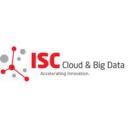 |
by Rich Brueckner on (#9YBV)
Today ISC Events announced that registration is now open for the inaugural ISC Cloud & Big Data conference. The event will take place Sept. 28-30 in Frankfurt, Germany.The post Registration Opens for ISC Cloud & Big Data appeared first on insideHPC.
|
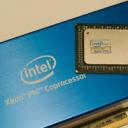 |
by MichaelS on (#9XWE)
"N-Body problems compare the interaction of N-bodies against N-bodies, which results in calculations of the order of N2. As this can be computationally very expensive, but a well understood process, techniques and optimizations can be performed on application code using compiler directives and easy to understand techniques."The post N-Body Methods Optimization appeared first on insideHPC.
|
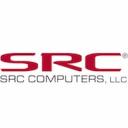 |
by Rich Brueckner on (#9Y9T)
In this slidecast, David Eaton and Mark Tellez from SRC Computer describe the company's new Saturn 1 server, a dynamically reconfigurable modular system for hyperscale data centers and Web operations.The post Slidecast: SRC Saturn 1 Server Taps FPGAs on HP Moonshot Platform appeared first on insideHPC.
|
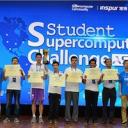 |
by Rich Brueckner on (#9WGF)
Today the 2015 ASC Student Supercomputer Challenge (ASC15) announced the winners of what they're calling "the largest supercomputer contest in the world." In total, 16 teams battled it out in the final round of the event, which took place last week at Taiyuan University of Technology in China.The post Tsinghua University Wins ASC15 Student Cluster Challenge appeared first on insideHPC.
|
by Rich Brueckner on (#9W9X)
Today Fraunhofer announced XtreemView, a new scalable 3D viewer for seismic data.The post New 3D Seismic Viewer from Fraunhofer appeared first on insideHPC.
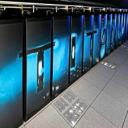 |
by Rich Brueckner on (#9W86)
In this video, Aaron Vose from Cray presents: Porting Computational Physics Applications to the Titan Supercomputer with OpenACC and OpenMP.The post Video: Porting Physics Apps to Titan with OpenACC appeared first on insideHPC.
|
 |
by Rich Brueckner on (#9W1R)
Today the Pawsey Supercomputing Center announced $21.6 million of funding from the Australian government. The operational funding, which runs until 2020-21, allows the Pawsey Supercomputing Centre to continue providing world-class resources and expertise in supercomputing, data and visualization and recognizes the WA Government’s significant commitment to cementing the State’s place as a scientific computing hub.The post Pawsey Supercomputer Center Receives $21.6M Funding appeared first on insideHPC.
|
 |
by Rich Brueckner on (#9VY9)
In this video, researchers describes the Lattice-CSC cluster in Darmstadt, Germany. Currently the most energy-efficient supercomputer on the Green500 list, the Lattice-CSC is powered by 640 AMD FirePro S9150 GPUs to achieve 5.27 GFLOPS/Watt.The post Video: L-CSC Cluster Tops Green500 with AMD Firepro appeared first on insideHPC.
|
 |
by Rich Brueckner on (#9WBK)
A new paper from ORNL's Sparsh Mittal and Jeffrey Vetter seeks to change the mindset of researchers using GPUs. Entitled, "A Survey of CPU-GPU Heterogeneous Computing Techniques,†the paper contends that merely offloading computational tasks to GPUs is not optimal, instead, using both CPU and GPU can lead to potentially higher speedup.The post New Report Surveys CPU-GPU Heterogeneous Computing Techniques appeared first on insideHPC.
|
 |
by Rich Brueckner on (#9VFG)
In this podcast, the Radio Free HPC team looks ahead to the ISC 2015 Student Cluster Competition. This year, 11 teams from around the globe will face off to build the fastest HPC cluster.The post Radio Free HPC Previews the ISC 2015 Student Cluster Competition appeared first on insideHPC.
|
 |
by Rich Brueckner on (#9ST7)
Over at Parallella.org, Adapteva Founder & CEO Andreas Olofsson writes that the organization is seeking help from its user community to "help build the most efficient virtual supercomputer in the world this week."The post Seeking Volunteer Parallella Boards for Virtual Supercomputer appeared first on insideHPC.
|
 |
by Rich Brueckner on (#9ST5)
In this video, Docker Founder and CTO Soloman Hykes explains what Docker is and why developers like it. "Docker is an open-source engine that automates the deployment of any application as a lightweight, portable, self-sufficient container that will run virtually anywhere."The post Video: Introduction to Docker appeared first on insideHPC.
|
 |
by staff on (#9SQD)
Today CoolIT Systems announced that the Poznan Supercomputing and Networking Center has successfully deployed Rack DCLC liquid cooling. Through a collaboration with Huawei and Itprojektof, the company described the new installation as the most energy efficient HPC cluster in Poland.The post Poznan in Poland Goes Green with CoolIT Systems appeared first on insideHPC.
|
by staff on (#9RZV)
The development of photonic technologies to speed up computing has taken two steps forward, following recent announcements demonstrating the use of photonics in both processing and data transfer.The post Photonics Moves Forward for Future Computing Technology appeared first on insideHPC.
 |
by Rich Brueckner on (#9QJ6)
PNNL researchers are using supercomputers to take on two of the main challenges of exascale: energy efficiency and resiliency. Their simulations show that dynamic voltage scaling, also known as undervolting, can reduce power consumption and leverage existing mainstream resilience techniques at scale for improving system failure rates.The post PNNL Looks at Undervolting to Meet Exascale Goals appeared first on insideHPC.
|
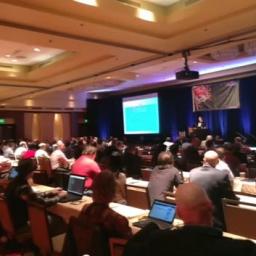 |
by Rich Brueckner on (#9Q0P)
"Kerberos is the most famous way to allow safe communications over a non-secure network, by providing authentication and encryption. This presentation will show how far Lustre can go in Kerberos security, and what kind of authentication and encryption we can get to work. We will also take an interest in the impact of various Kerberos flavors over performance."The post Lustre & Kerberos: In Theory and In Practice appeared first on insideHPC.
|
 |
by staff on (#9NBQ)
Caltech researchers are using NERSC supercomputers to search for newly born supernovas. The details of their findings appear May 20 in an advance online issue of Nature.The post Hunting Supernovas with Supercomputers appeared first on insideHPC.
|
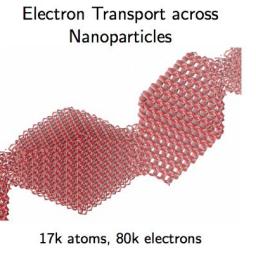 |
by Rich Brueckner on (#9NA5)
"Learn how we achieve great GPU performance with an auto-tuned sparse matrix multiplication library, enabling quantum simulation of millions of electrons."The post Video: Accelerated Quantum Chemistry with CP2K appeared first on insideHPC.
|
by Rich Brueckner on (#9KSC)
InfoGroup Northwest is seeking a Lead Research Systems Engineer in Portland in our Job of the Week.The post Job of the Week: Lead Research Systems Engineer in Portland appeared first on insideHPC.
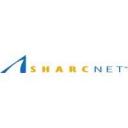 |
by Rich Brueckner on (#9KQ9)
"This talk will discuss various strategies to make a serial Python code faster, for example using libraries like NumPy, or tools like Cython which compile Python code. The talk will also discuss the available tools for running Python in parallel, focusing on the mpi4py module which implements MPI (Message Passing Interface) in Python."The post Video: High Performance Computing with Python appeared first on insideHPC.
|
by Rich Brueckner on (#9DMM)
This year, the ISC High Performance Conference will feature a new session called Great Success Stories of HPC. To learn more, we caught up with session chair Frank Baetke from HP.The post Interview: HPC Success Stories Session Coming to ISC 2015 appeared first on insideHPC.
 |
by Rich Brueckner on (#9J6W)
The HiPEAC 2016 Conference has issued its Call for Papers. HiPEAC is the European Network of Excellence on High Performance and Embedded Architecture and Compilation.The post Call for Papers: HiPEAC 2016 in Prague appeared first on insideHPC.
|
 |
by staff on (#9J5Q)
Today Sandia National Laboratories announced that researcher Mark Taylor has received the U.S. Department of Energy (DOE) 2014 Secretary’s Honor Award — the department’s highest non-monetary employee recognition — for his work as chief computational scientist for DOE’s Accelerated Climate Modeling for Energy (ACME) executive council team.The post Sandia’s Mark Taylor Receives DOE Secretary’s Honor Award appeared first on insideHPC.
|
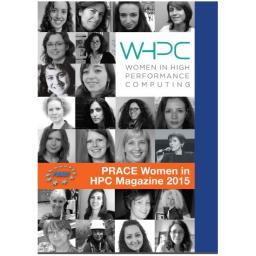 |
by Rich Brueckner on (#9J4E)
The Partnership for Advanced Computing in Europe in Europe has published the first edition of PRACE Women in HPC Magazine, a collection of success stories celebrating the contribution women make to HPC and computational science. Designed to put the spotlight on the scientific advances made in the past year, the magazine tells the story of women who help make PRACE a world-leading force in HPC-enabled science and the march towards Exascale computing.The post New Magazine Celebrates PRACE Women in HPC appeared first on insideHPC.
|
by staff on (#9J38)
Today the Gauss Centre for Supercomputing (GCS) in Germany announced the award of close to 1 billion compute core hours to scientifically outstanding national research projects.The post GCS in Germany Awards Close to 1 Billion Core Hours appeared first on insideHPC.
 |
by Rich Brueckner on (#9G8N)
"Have you simplified your HPC environment or improved productivity with the use of PBS Works products? If so, Altair invites you to share your experiences, tips and tricks and practical lessons through case study style presentations that highlight the effective use of high performance computing. The PBS Works User Group encourages input and participation from a wide range of organizations, large and small, across all sectors."The post Call for Presentations: PBS Works User Group appeared first on insideHPC.
|
by Rich Brueckner on (#9FYN)
The spotlight has fallen on German supercomputing with several announcements about European-wide research which Germany's Gauss Centre for Supercomputing enables.The post German HPC Leads European Research appeared first on insideHPC.
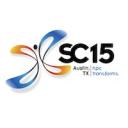 |
by staff on (#9FSF)
Today SC15 announced the winners of their annual Test of Time Award. The Award recognizes an outstanding paper that has deeply influenced the HPC discipline.The post SC15 Announces Test of Time Award Winners appeared first on insideHPC.
|
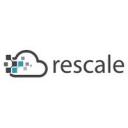 |
by Rich Brueckner on (#9FPP)
This week Rescale announced their new cloud HPC and simulation solution called ScaleXTM Enterprise. "ScaleX Enterprise is Rescale’s secure and flexible solution for enterprise companies, combining its award-winning engineering simulation platform with a powerful administrative portal and comprehensive developer toolkit."The post Rescale Rolls Out Cloud HPC and Simulation Platform appeared first on insideHPC.
|
 |
by MichaelS on (#9FJD)
In some domains, an N-Body simulation is key to solving for the movement and forces of a dynamic system of particles. At each time step, the force that one body exacts on each other, and then the velocity can be computed. The simulation can continue up to a desired number of time steps.The post Direct N-Body Simulation appeared first on insideHPC.
|
 |
by Rich Brueckner on (#9FKK)
"OpenACC and OpenMP provide programmers with two good options for portable, high-level parallel programming for GPUs. This talk will discuss similarities and differences between the two specifications in terms of programmability, portability, and performance."The post Comparing OpenACC and OpenMP Performance and Programmability appeared first on insideHPC.
|
 |
by staff on (#9B60)
Altair’s HyperWorks Unlimited Virtual Appliance goes fully into the cloud with an Amazon-hosted option that lets users get started with HPC in just minutes.The post HPC Appliance Computing Goes Virtual appeared first on insideHPC.
|
by Rich Brueckner on (#9DJH)
Today Colfax International announced that the company is the recipient of the HPC Technical Computing Platform Partner Of The Year Award. The award ceremony took place on May 5, 2015 at the Intel Solutions Summit in Dallas.The post Colfax Receives Intel HPC Partner Of The Year Award appeared first on insideHPC.
 |
by staff on (#9DBM)
With more and more enterprises moving to the cloud, there is a growing demand for developers, information technology professionals, and forward-thinking business leaders with demonstrated knowledge of cloud computing. To meet this need, Amazon Web Services has announced AWS Educate, a major initiative designed to fundamentally transform how cloud computing is taught and how best practices are shared in higher education.The post Announcing AWS Educate: a Free Resource for Cloud Learning appeared first on insideHPC.
|
 |
by Rich Brueckner on (#9CVV)
"Learn about extensions that enable efficient use of Partitioned Global Address Space (PGAS) Models like OpenSHMEM and UPC on supercomputing clusters with NVIDIA GPUs. PGAS models are gaining attention for providing shared memory abstractions that make it easy to develop applications with dynamic and irregular communication patterns. However, the existing UPC and OpenSHMEM standards do not allow communication calls to be made directly on GPU device memory. This talk discusses simple extensions to the OpenSHMEM and UPC models to address this issue."The post UPC and OpenSHMEM PGAS Models on GPU Clusters appeared first on insideHPC.
|
by staff on (#9BJ4)
Today Advanced Clustering Technologies announced that the University of Central Oklahoma’s Center for Research and Education in Interdisciplinary Computation (CREIC) has selected the company to build their next supercomputer. The 32 Teraflop HPC cluster will be named “Buddy†in honor of the university’s mascot, Buddy Bronco.The post Advanced Clustering Builds 32 Teraflop “Buddy†Supercomputer appeared first on insideHPC.
 |
by staff on (#9BFS)
Quantum computing has taken a step closer with two recent announcements demonstrating methods for error correction in addition to a new scalable design for quantum circuits based on a lattice structure.The post Two More Steps Towards Quantum Computing appeared first on insideHPC.
|
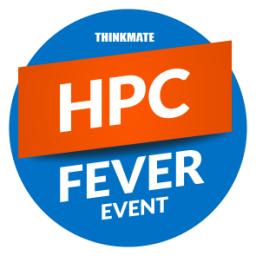 |
by Rich Brueckner on (#9BRE)
We don't normally report on pricing, but a free Intel Xeon Phi from ThinkMate sure sounds like a great deal. "Now through June, Thinkmate is installing Intel Xeon Phi 5110P Coprocessors (a $2,500 value each) for Free with any compatible server."The post Thinkmate Offers Free Xeon Phis with Your Server appeared first on insideHPC.
|
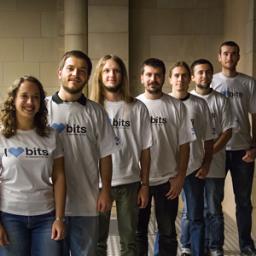 |
by Rich Brueckner on (#9BQ8)
A team of six undergraduate students from Barcelona School of Informatics involved in the Mont-Blanc project have been selected to take part in the 4th HPCAC-ISC Student Cluster Competition.The post Barcelona Team to Build ARM Cluster at ISC Student Cluster Competition appeared first on insideHPC.
|
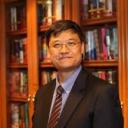 |
by Rich Brueckner on (#9AXT)
"We present a state-of-the-art image recognition system, Deep Image, developed using end-to-end deep learning. The key components are a custom-built supercomputer dedicated to deep learning, a highly optimized parallel algorithm using new strategies for data partitioning and communication, larger deep neural network models, novel data augmentation approaches, and usage of multi-scale high-resolution images."The post Deep Learning at Scale appeared first on insideHPC.
|
by staff on (#99KN)
Today Bright Computing announced Bright OpenStack, a fully integrated software stack for deployment, management, and maintenance of private clouds.The post Bright OpenStack Distribution Manages Private Clouds appeared first on insideHPC.
by Rich Brueckner on (#99J2)
In this video from WestGrid in Canada, Dr. Yussanne Ma from the Michael Smith Genome Sciences Centre describes how high performance computing supports her research group's work, highlighting a recent project where a bioinformatics pipeline was built for the personalized onco-genomics project (POG) at the BC Cancer Agency.The post Video: A Bioinformatics Pipeline for Analyzing Patient Tumours appeared first on insideHPC.
 |
by Rich Brueckner on (#98MF)
"Our computing systems continue to evolve, providing significant challenges to the programming teams managing large, long-lived projects. Issues include rapidly increasing on-node parallelism, varying forms of heterogeneity, deepening memory hierarchies, growing concerns around resiliency and silent data corruption, and worsening storage bottlenecks."The post Podcast: Cray’s Steve Scott on Programming for the Next Decade appeared first on insideHPC.
|
 |
by lewey on (#9971)
Dr. Lewey Anton reports on who’s jumping ship and moving on up in HPC. In this edition, Sumit Gupta leaves Nvidia for a new post as VP of HPC & OpenPOWER Operations at IBM.The post HPC People on the Move: May Edition appeared first on insideHPC.
|
 |
by Rich Brueckner on (#991B)
"We present results for a platform consisting of an NVM Express SSD, a CAPI accelerator card and a software stack running on a Power8 system. We show how the threading of the Power8 CPU can be used to move data from the SSD to the CAPI card at very high speeds and implement accelerator functions inside the CAPI card that can process the data at these speeds."The post Video: Accelerating OpenPOWER Using NVM Express SSDs and CAPI appeared first on insideHPC.
|